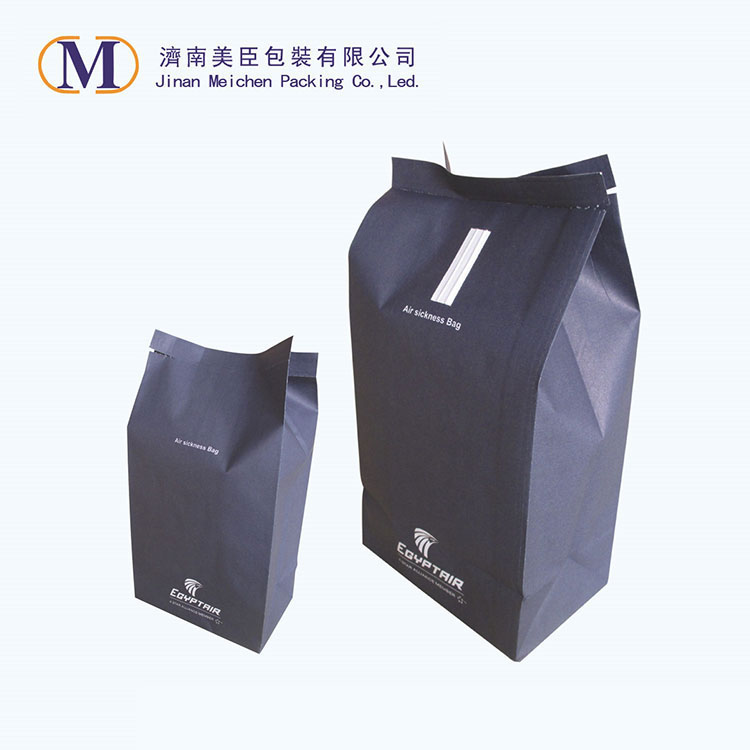Smooth Skies Ahead: Managing Inventory and Supply Chain Logistics for Disposable Airsickness Bags
2024-03-15
In the dynamic world of air travel, ensuring a seamless inflight experience requires meticulous planning and coordination. Among the many essentials onboard an aircraft, disposable airsickness bags play a critical role in maintaining passenger comfort and hygiene. To meet the demands of airlines and other customers, managing inventory and supply chain logistics for these essential items is paramount. In this blog, we delve into the strategies and practices employed to ensure a consistent and reliable supply of disposable airsickness bags, ensuring smooth skies ahead for passengers and crew alike.
1. Forecasting and Demand Planning:
A key aspect of managing inventory for disposable airsickness bags is accurate forecasting and demand planning. By analyzing historical data, market trends, and customer feedback, we can anticipate fluctuations in demand and adjust production accordingly. Factors such as seasonal travel patterns, route expansion, and special events may influence demand, requiring agile and flexible planning processes to ensure adequate inventory levels at all times.
2. Supplier Relationships and Partnerships:
Strong relationships with suppliers are essential for maintaining a reliable supply chain for disposable airsickness bags. We work closely with trusted suppliers who share our commitment to quality, reliability, and sustainability. By fostering open communication, collaboration, and transparency, we can address potential challenges proactively and ensure timely delivery of materials and components needed for production.
3. Inventory Management Systems:
Robust inventory management systems play a crucial role in tracking and monitoring disposable airsickness bag inventory levels throughout the supply chain. Advanced software solutions provide real-time visibility into inventory status, allowing us to optimize stock levels, minimize excess inventory, and prevent stockouts. By leveraging technology, we can streamline inventory management processes and respond swiftly to changing demand dynamics.
4. Lean Manufacturing Practices:
Implementing lean manufacturing practices helps optimize production efficiency and minimize waste in the manufacturing process. By adopting principles such as just-in-time manufacturing, continuous improvement, and waste reduction, we can maximize resource utilization and minimize lead times. Lean manufacturing principles enable us to produce disposable airsickness bags with greater agility and responsiveness to customer needs.
5. Quality Assurance and Compliance:
Maintaining high standards of quality assurance and compliance is non-negotiable in the production of disposable airsickness bags. Stringent quality control measures are implemented throughout the manufacturing process to ensure that each bag meets rigorous standards for reliability, performance, and safety. Compliance with regulatory requirements and industry standards is closely monitored to uphold product integrity and customer satisfaction.
6. Contingency Planning and Risk Management:
Despite careful planning and execution, unforeseen disruptions in the supply chain can occur. To mitigate risks and ensure business continuity, we have robust contingency plans in place. These plans include alternative sourcing strategies, backup inventory reserves, and emergency response protocols to address supply chain disruptions promptly and minimize their impact on customer service.
7. Continuous Improvement and Feedback Loop:
Continuous improvement is integral to our approach to managing inventory and supply chain logistics. We actively seek feedback from customers, suppliers, and stakeholders to identify areas for improvement and optimization. By incorporating lessons learned and implementing process enhancements, we can enhance efficiency, reliability, and responsiveness across the supply chain.
In conclusion, managing inventory and supply chain logistics for disposable airsickness bags requires a comprehensive and integrated approach that prioritizes forecasting, supplier relationships, inventory management systems, lean manufacturing practices, quality assurance, contingency planning, and continuous improvement. By employing these strategies and practices, we can ensure a consistent and reliable supply of disposable airsickness bags, enabling airlines and other customers to deliver a seamless and comfortable inflight experience for passengers. With smooth skies ahead, passengers can travel with confidence, knowing that essential amenities such as disposable airsickness bags are readily available whenever needed.



